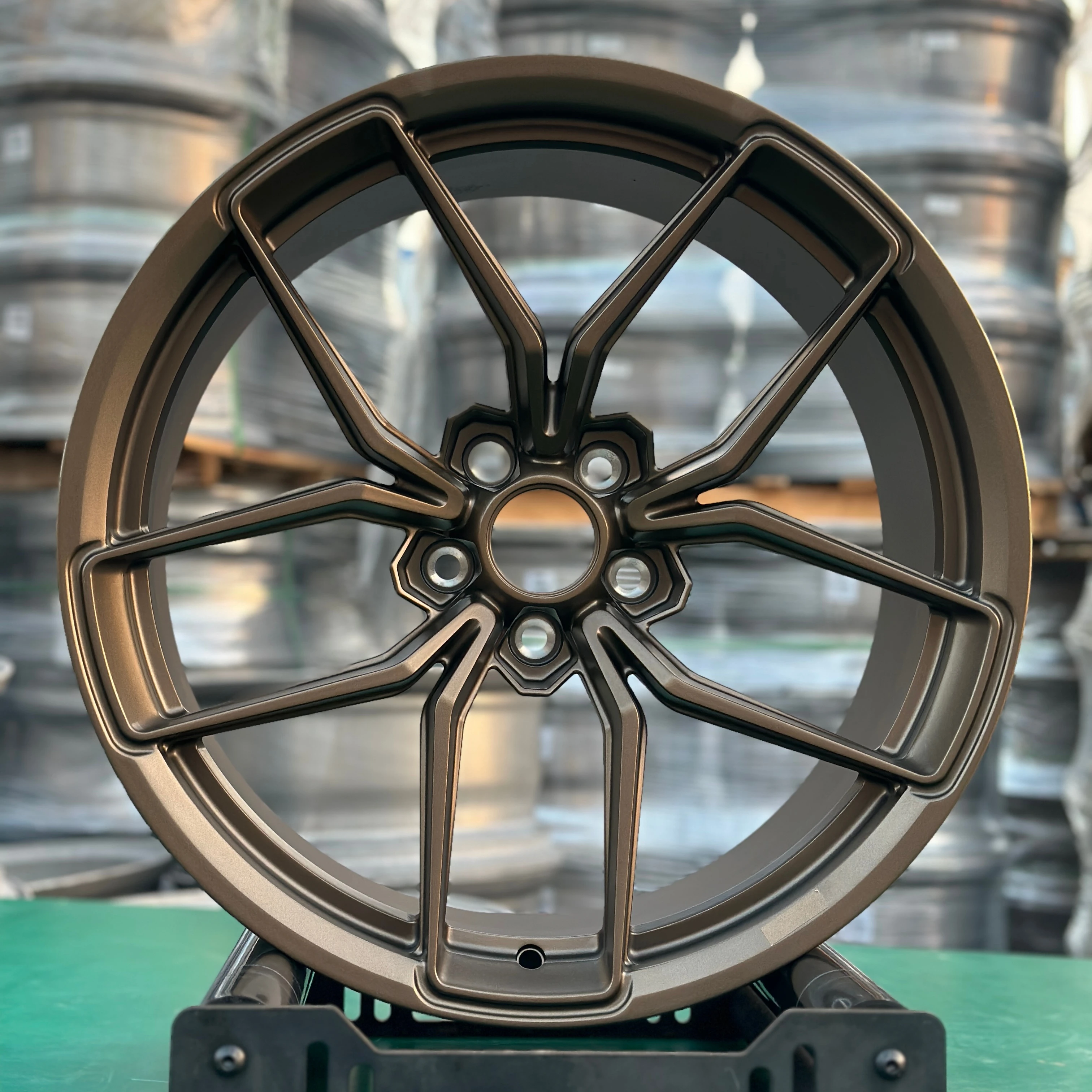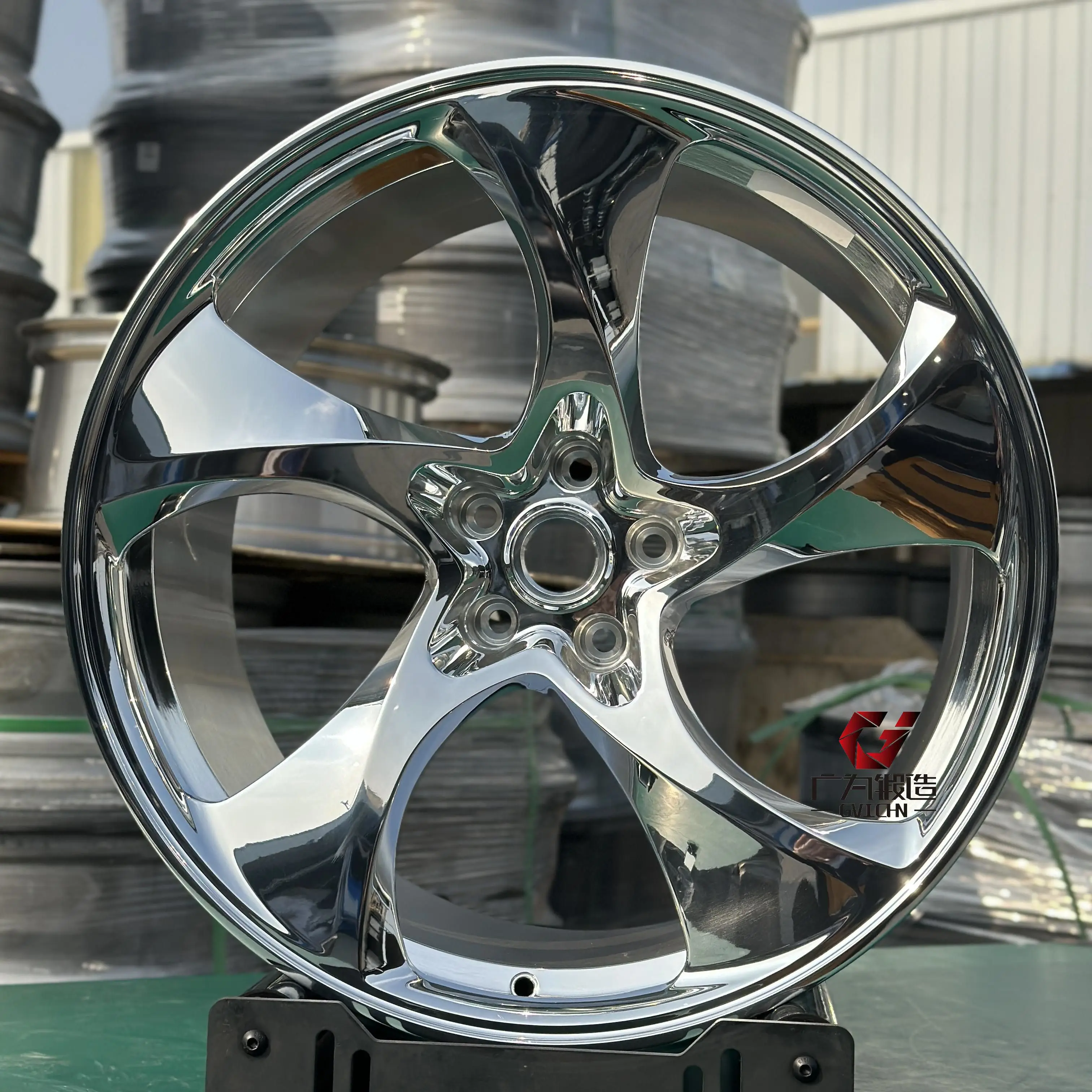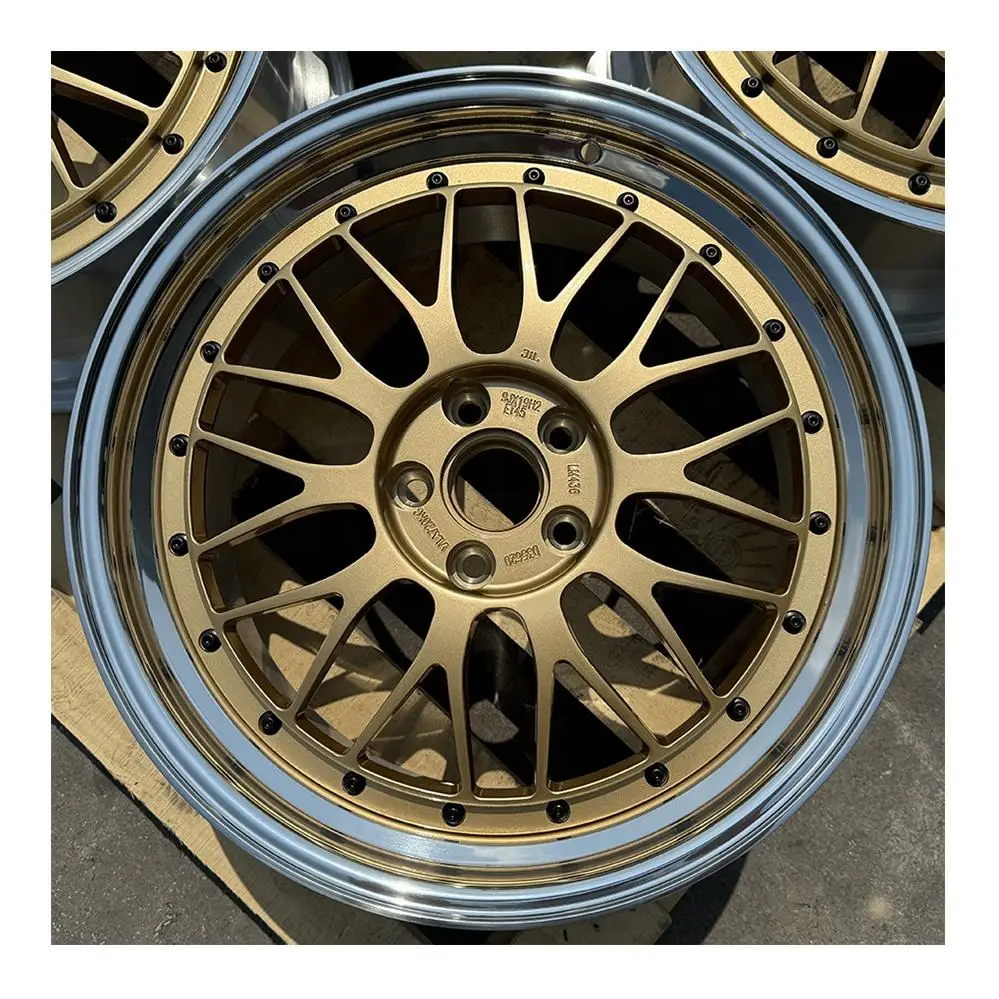Engineering Excellence: The Making of Three-Piece Forged Wheels
The Art of Forging: How Three-Piece Wheels Are Made
Hot Stamping & CNC Precision
Hot stamping plays a key role in wheel forging, helping manufacturers produce those strong components needed for serious performance work. When done right, the process involves heating metal until it's malleable then applying massive pressure to shape it. This actually changes how the metal grains align inside, which makes these stamped wheels tougher than regular cast ones. Many mechanics will tell you they last longer too. Off-road enthusiasts and race teams rely on this technique because it creates wheels that can handle extreme conditions without cracking or warping under stress.
CNC machining stands out as one of those critical processes when it comes to manufacturing wheels that meet exact specifications with really tight tolerances. What makes this tech so valuable is its ability to deliver pinpoint accuracy, especially for complex designs such as three piece wheels including popular deep dish styles. These wheels need both strength and good looks, and CNC gets them just right without compromising either aspect. According to recent industry reports, wheels produced using precision machining techniques perform better overall. They stay consistent across production runs and hold up well under harsh driving conditions too, making them reliable choices for serious applications.
Multi-Component Assembly Process
Putting together multi component wheels takes some careful work when combining all those different pieces into something that actually works well on a vehicle. Mechanics start by connecting the inner and outer parts of the wheel to the central hub area, usually fastening them with bolts or sometimes welding depending on what specs are required. The whole setup allows for pretty exact measurements when adjusting sizes and offsets, which explains why so many specialty shops rely on this method for custom builds. Jeep owners love these kinds of wheels because they can get that perfect fitment over rough terrain, while truck enthusiasts appreciate how much stronger these assembled wheels tend to be compared to standard factory options.
What makes this assembly technique stand out? Well, it spreads weight around the wheel much better than other methods do. And when weight distribution improves, cars become more stable overall. Less strain gets put on those crucial parts like axles and suspension components too. Top tier forged wheel manufacturers have caught onto this trick for years now. Their black rim products look great while actually performing well under pressure. Car fans love them because they get real value from something that doesn't compromise on appearance either. Style meets function right there on the road.
Heat Treatment for Enhanced Durability
Heat treatment plays a vital role when manufacturing three piece wheels, really boosting their strength while making them much more resistant to getting tired over time. The industry commonly uses techniques like aging and annealing to strengthen wheel structures. What happens during these processes is that the metal gets harder, so wheels can stand up better against all sorts of environmental conditions and mechanical stress from regular use on roads. This means wheels last longer before needing replacement, which saves money for consumers and reduces waste in the long run.
Research shows heat treatment can significantly boost how long forged wheels last, making them both tough and dependable when put through tough conditions. When manufacturers adjust the metal at a microscopic level during heating, it makes the wheels much better at handling repeated stress. This matters a lot for cars driving over rough terrain or going at highway speeds where wheel failure could be dangerous. The treatment keeps wheels working properly even after years of use, while still looking good despite all the punishment they take from everyday driving situations.
6061-T6 Aluminum: Strength-to-Weight Ratio
The 6061-T6 aluminum alloy has become really popular among wheel manufacturers because of how strong it is compared to its weight. What makes this material stand out is that it stays light while still holding up under pressure, which is exactly what car makers need when building parts that have to perform well without adding extra pounds to the vehicle. When looking at different types of aluminum, 6061-T6 comes out ahead since it supports structures effectively and helps save gas by keeping cars lighter overall. That's why many truck and Jeep owners go for wheels made from this particular alloy. Off road driving requires wheels that can handle all sorts of terrain without breaking down, and 6061-T6 delivers just that combination of toughness and lightness needed for serious off-roading adventures.
Grain Structure Optimization Techniques
The way metal grains are arranged inside wheel alloys really matters when it comes to how these components hold up against tough road conditions. When manufacturers get this grain structure right, they see better results in terms of toughness and how the material stands up to outside forces. Most factories use special heating and shaping processes to control both the size and direction of these tiny metal crystals. This actually makes the alloy stronger while still allowing it to bend without breaking. Industry experts have seen time and again that wheels made with properly aligned grains just handle impacts much better than those with random grain patterns. Look at rally racing wheels for instance they rarely crack or warp even after hitting massive potholes at speed because their grain structures were carefully engineered during production. This attention to detail means longer lasting wheels that drivers can trust when pushing vehicles to their limits on rough terrain.
Corrosion Resistance for Off-Road Applications
Off road wheels need good corrosion protection since they get tossed around in all sorts of brutal environments. Think about it: mud splashes, puddles, road salt from winter driving, plus whatever chemicals might be floating around in industrial areas. Without proper defense, these wheels start to break down pretty fast. Most wheel makers apply special coatings and treatments like anodizing or powder coating to stop rust and chemical damage. These techniques create barriers that actually work when put through their paces. Look at old trucks that never got any protection – their wheels look like Swiss cheese after just a few seasons. Real world testing shows what happens when manufacturers skip on these coatings. For anyone who wants wheels that last through mud bogs, rocky trails, and salty coastal roads, corrosion resistance isn't just nice to have, it's absolutely necessary for getting reliable performance year after year.
Design Innovation: From Deep Dish to Modern Performance
Evolution of Deep Dish Aesthetics
Deep dish wheels have carved out quite a niche in car design, mixing style with actual performance benefits. Back when they first became popular, these wheels stood out because of their bold appearance and how they gave cars that extra dimension visually, making them stand apart from others on the road. As years went by, automakers kept tweaking their designs, trying to find just the right mix between looking good and working well. What makes these wheels interesting isn't just looks though. The wider surface area actually helps improve traction and keeps the vehicle more stable during turns. Car enthusiasts still flock to them despite newer alternatives, which tells us something about what people really want in their rides. Most folks seem drawn to both the eye-catching appearance and the way these wheels make handling feel better in everyday driving situations.
Custom Offsets for Truck & Jeep Rims
When it comes to making trucks and Jeeps perform better, custom wheel offsets matter a lot. What we're talking about here is basically moving wheels inward or outward from where they originally sit on the hub. Getting the right offset changes how the vehicle sits on the road and affects how it handles corners and rough roads. Good offset choices make a noticeable difference in several ways. They help balance weight distribution across all four wheels which means less body roll during turns. The tires last longer too since proper alignment reduces uneven wear patterns. And let's face it, most people want their ride to look tougher and more muscular after spending money on modifications. Real world testing shows vehicles with correctly set offsets handle muddy trails much better and stay stable even when going over rocky terrain at speed something every serious off roader knows matters for safety and control.
Structural Reinforcement in Black Rims
Structural reinforcement plays a big role in making black rims last longer and work better overall. When makers use stuff like stronger aluminum alloys and build them with things like multiple spoke designs plus extra thick sections where needed, they get better results on tests for how well the rims handle impacts and heavy loads. Most people who know about cars will tell you that these kinds of design improvements really matter. The rims just don't wear out as fast when driven regularly or exposed to rough roads and weather. That's why so many car fans go for black rims with good structural support. They want something tough enough to survive everyday driving but still look great on their vehicles.
Three-Piece vs. One-Piece: Engineering Advantages Unveiled
Weight Reduction Through Modular Design
Three piece wheels have this modular design that actually cuts down on weight when compared to those solid one piece alternatives. The reason? Manufacturers can work with different materials for each part – center section, outer barrel, inner barrel – so they get to optimize for lighter weight without sacrificing structural integrity. Lighter wheels mean cars perform better overall. Acceleration picks up, brakes respond faster, and fuel economy gets a boost too. Race teams know this well. Their cars equipped with three piece wheels tend to handle corners sharper and react quicker during races. And it's not just theory talking here. Track times back this up, which explains why so many performance minded drivers go for these wheels when they want maximum speed and efficiency from their machines.
Repairability & Customization Flexibility
Three piece wheels tend to last longer when something goes wrong, which really matters for people who want to save money and stay happy with their investment. When just one section gets damaged, mechanics can swap out only what's broken instead of tossing the whole wheel away. That means cars spend less time sitting in the shop waiting to get fixed. What's more, these wheels offer way more options for making them look different from stock models. Car owners love being able to play around with various components to create something truly special. Some folks even build custom setups where each spoke matches their favorite color scheme or racing team logo. Many hot rod builders swear by this approach because they can tweak everything down to the smallest detail while still getting good performance. All things considered, the fact that these wheels can be repaired plus all the cool ways to customize them makes them pretty hard to beat if someone cares about how their ride looks as much as how it performs.
Impact Resistance in Extreme Conditions
Innovations in three piece wheel design have made them much better at standing up to rough impacts when driving through tough conditions. These wheels are built from three separate components which helps spread out the stress across different areas, making them less likely to crack or break during those intense off road trips or on track days where pressure builds up fast. Data shows these multi part wheels tend to hold up better than traditional cast wheels in similar situations. Recent improvements in materials have also helped boost their strength. We're talking about stuff like aerospace grade aluminum that adds extra toughness without making the wheels too heavy. For anyone serious about getting good performance out of their vehicle no matter what terrain they face, three piece wheels just make sense because they combine lasting power with solid construction even when things get unpredictable.
Recommended Products
 Hot News
Hot News
-
Forged Carbon Products
2024-05-21
-
Forged Off-Road Accessories
2024-05-21
-
GVICHN Introduces Revolutionary Forged Two-Piece Product
2024-05-21







 ONLINE
ONLINE